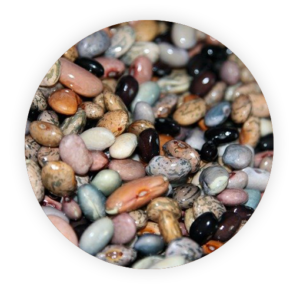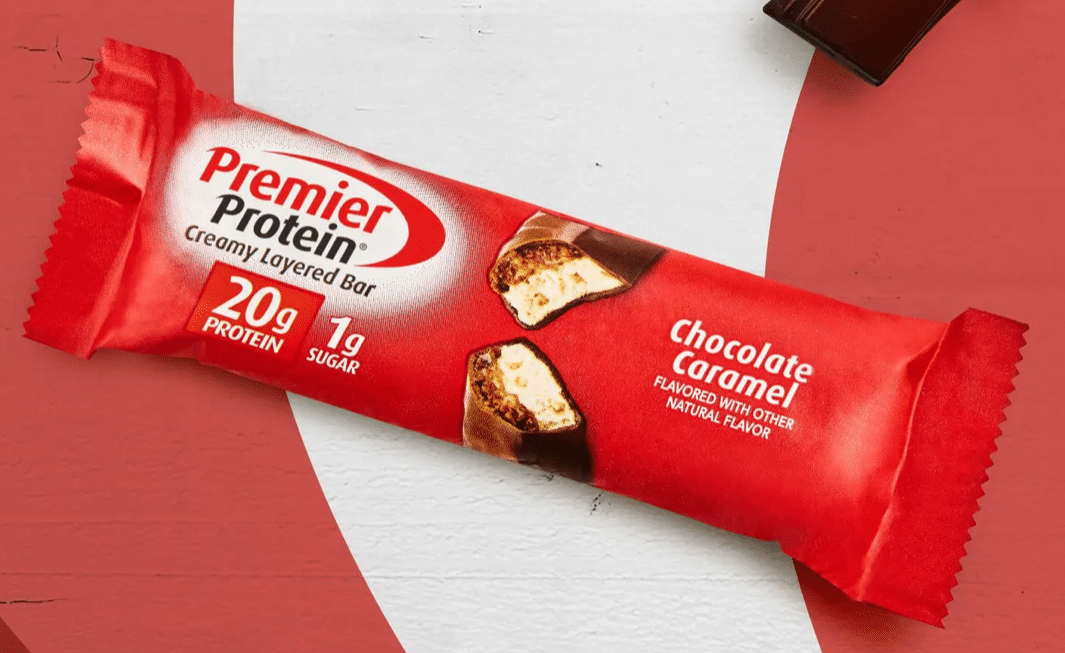Farrinstitute is reader-supported. We may receive commissions on purchases made through links on our site.
This snack makes for a convenient food item on the go that packs a punch. A search query results in an array of flavors, including ingredients like nut butter.
They function as a quick protein source for a customer, along with fiber and other nutrients. The best protein bars can benefit you, but you’ll want to learn what to look for and our research lays it out for you.
These work by providing you a dose of vitamins, carbs, proteins, fiber and minerals. They don’t equate to the same nutritional value provided by actual food, but they can offer supplementation when you need it.
Be careful when choosing one, though. They can vary depending on what they pack from the grams of protein to the grams of fiber, added sugar and other components offered per serving.
Some feature loads of added sugar, while others don’t. You’ll also find a plant based protein bar suitable for vegans.
Protein bars are a means to an end. They provide benefits in so far as they can help curb your appetite, support muscle recovery and muscle mass and energize your workouts.
Some top advantages include the following:
A single protein bar can pack up to 20 grams of protein per serving. To give you an idea, the Academy of Nutrition and Dietetics recommends that the average individual needs to consume around 0.35 grams of protein daily, per pound of body weight [1]. This indicates that a bar can help you fill up to half of that requirement, depending on your size.
Beyond protein, a bar can also offer the following, all of which are necessary for a day’s nutrition and even more imperative for muscle building:
Consuming a protein bar from time to time might also be necessary for weight adjustments. If you want to lose weight, they can work as a meal replacement, so long as it provides an adequate amount of nutrition.
Conversely, for an individual who needs to gain weight, a bar can help you pack in more calories with ease.
Protein bars are a popular option among athletes and gym rats for this reason. This depends on the bar you choose, of course, as some contain down to 8 grams of protein per serving, which is too little when you’re looking to bulk up.
If you’re consuming a protein bar for muscle measures, aim for around 15 to 20 grams per bar. The source of protein also matters, and we cover those components in the ingredient list.
The convenience of these products is one of the primary factors that draws people to them. You can throw it in your gym bag or briefcase and eat it when you’re on the run, no cleanup required.
It’s a big warning, too. Many labeled as “healthy protein bars” are packed with things that’ll fall under empty calories, which isn’t what you want for hitting your health goals. Watch out for things like saturated fats and added sweeteners, including sugar alcohols.
How nutritional a bar really is boils down to the ingredients inside. Here are some common items found on ingredient lists:

Nuts and legumes make for great sources of clean plant based proteins. Bars often feature things like:
In a store-bought protein bar, it’s more common to find nuts and seeds than legumes such as beans and chickpeas. You will, though, find numerous recipes online for homemade protein bars that feature things like black beans and lentils.
Grains are a great source of carbohydrates and additional protein, but not all of them are created equal. You want to aim for a bar that includes whole grains such as:
Egg white powder offers a binding texture to protein bars. This material is low in fat and also provides around 4 grams of protein per egg used. In one bar, this could be minimal, but along with other ingredients it adds up.
For vegans, you’ll want to avoid this given it’s an animal source.
Dairy proteins make for another common group of components found in a protein bar. Measurements below are listed by powdered scoop, but keep in mind the amount of powder in each bar will vary widely. Most protein bars will contain less than one scoop:
Whey comes about as a result of cheese production. It features amino acids and functions as a protein derivative at around 17 to 20 grams per 30 grams of whey powder. This isolate includes:
Casein is another form of protein, a constant in any milk product. This substance also contains amino acids that help with muscle growth and recovery, as well. One 33-gram scoop of this powder packs around 24 grams of protein in it.
Casein also contains:
Yogurt powder could be gentler on the stomach compared to the dairy sources above, in case you’re sensitive. Do note, though, that it typically features less protein as well, around 20 grams per one 33g scoop. It’s beneficial in other ways including:
Naturally, manufacturers want their protein bars to taste good. That’s why you’ll find flavors like birthday cake, mint chocolate, chocolate peanut butter, chocolate chip cookie dough, dark chocolate and white chocolate, among others.
Some of these options will come with natural sugars, but many contain added sugars that make for empty calories. If you’re trying to lose weight while consuming protein bars, be on the lookout for this issue.
Artificial flavorings make for another cautionary measure when shopping for a protein bar. You’ll most often find them with bars that contain the flavors mentioned above.
Some companies are smart, though, and advertise healthier options with few to no artificial ingredients included. Examine the pack carefully before purchasing.
Vegetable oils are, unfortunately, popular because they work as a binding agent and provide creaminess to otherwise rough textures. If you see a protein bar with “hydrogenated” or “partially hydrogenated” oils inside, that indicates its trans fat, which you’ll want to avoid.
Keep in mind that not all saturated fats are bad for you, so long as it’s in moderation.
Opt for a protein bar pack that features:
The best protein bars will closely resemble a whole food product in its ingredients, but it won’t be as nutritional. Still, it can offer you close to what you need, whether it be a gluten-free and plant based option or a satisfying chocolate peanut butter snack.
You’ll do best to choose a product that limits the amount of fillers and preservatives inside. These options will usually contain a high amount of sugar and or sodium, as well, so it’s not difficult to distinguish between that and your healthier choices.
Look for the wholesome ingredients we’ve detailed above including grains, protein and fiber sources including nuts, legumes and more.
As already mentioned, protein bars vary greatly where protein content comes into play. Something with 3 grams or 7 grams of whey protein, for example, doesn’t pack the punch that a more filling option offers you.
Aim for 15 to 20 grams of protein if you’re looking for high protein content. This will satiate you for a longer period and help with muscle recovery and building lean muscle mass.
You don’t want a protein bar filled with unnecessary oils that up the fat and calorie count in the product. Avoid this by sticking with the oils we’ve recommended and check the fat content percentage for discretion.
Maybe you suffer from lactose intolerance or are trying to abstain from carbohydrates or animal products at large. You’ll want to choose your protein bar accordingly.
Don’t forget about the grams of fiber inside, either. This will help you stay satiated and improve digestion on most diets.
Knowing what brands to look for is half the battle, and there are a few we can recommend here. Each company will have a different menu of flavors, but the protein content is around 20 protein grams per bar with all of them, though some are slightly less.
These products include: Pure Protein Bars, Quest Bars and Premier Protein.
Lemon cake makes for a unique choice. 

We scoured the internet to find the most frequently asked questions that individuals pose in regards to protein bars.
On a diet? A protein bar with fiber can be healthy, depending on the business menu and what each product has to offer. Avoid unhealthy fats and added sugars, and instead opt for a bar that contains grains, fiber and a high protein content.
Watch out for the sodium content in these bars, as well. Some sodium is necessary for your diet, but too much of it provides a disadvantage for weight loss (it increases water retention) and can lead to heart problems, as well.
Technically, no. Eating one wholesome bar with fiber every day should be okay, but using moderation is best. Err on the side of caution and watch for added sugar if you’re consuming a bar every day, though.
Most people eat protein bars after working out to replenish energy levels, help with muscle recovery, and hold them over until their next proper meal.
Some bars can help you lose weight by curbing your appetite and keeping you satiated, so long as there’s plenty of protein, fiber and healthy carbs inside.
A homemade fiber protein product is cheaper than buying a pack at the store, most certainly. Again, this depends on the contents inside the bar, but you can save money this way. Especially for niche items like plant based bars.
You can also avoid added sugar alcohols and other harmful ingredients by making your own bars at home. Opt for cane sugar, for example.
The perfect bar or plant based product will fulfill your protein needs and contain grams of fiber to bolster digestion and satiation.
People are different, maybe you prefer whey protein or a dark chocolate snack with nut butter. Items with 3 grams or 7 grams of protein won’t be hearty enough for muscle gain, and it’s important to check the protein sources in all items.
These companies might sneak in added sugar, too, not great for blood sugar or weight loss. Be on the lookout for that. Do you have a gluten intolerance? Watch for gluten-free options, too.
Are you a customer who prefers to order your bars online? Make an account and use your delivery address to find the best options in your country.
{
“@context”: “https://schema.org”,
“@type”: “BlogPosting”,
“mainEntityOfPage”: {
“@type”: “WebPage”,
“@id”: “https://farrinstitute.org/protein-bars/”
},
“headline”: “Protein Bars: Healthy Snack or Candy Bar in Disguise?”,
“description”: “This snack makes for a convenient food item on the go that packs a punch. A search query results in an array of flavors, including ingredients like nut butter.”,
“image”: “https://farrinstitute.org/wp-content/uploads/2021/03/legumes-300×291-1.png.webp”,
“author”: {
“@type”: “Person”,
“name”: “John Joshua”,
“url”: “https://farrinstitute.org/author/john-joshua/”
},
“publisher”: {
“@type”: “Organization”,
“name”: “Farr Institute”,
“logo”: {
“@type”: “ImageObject”,
“url”: “https://farrinstitute.org/”
}
},
“datePublished”: “2021-03-09”,
“dateModified”: “2023-05-26”
}
1. https://www.acsm.org/docs/default-source/files-for-resource-library/protein-intake-for-optimal-muscle-maintenance.pdf